Northern Region
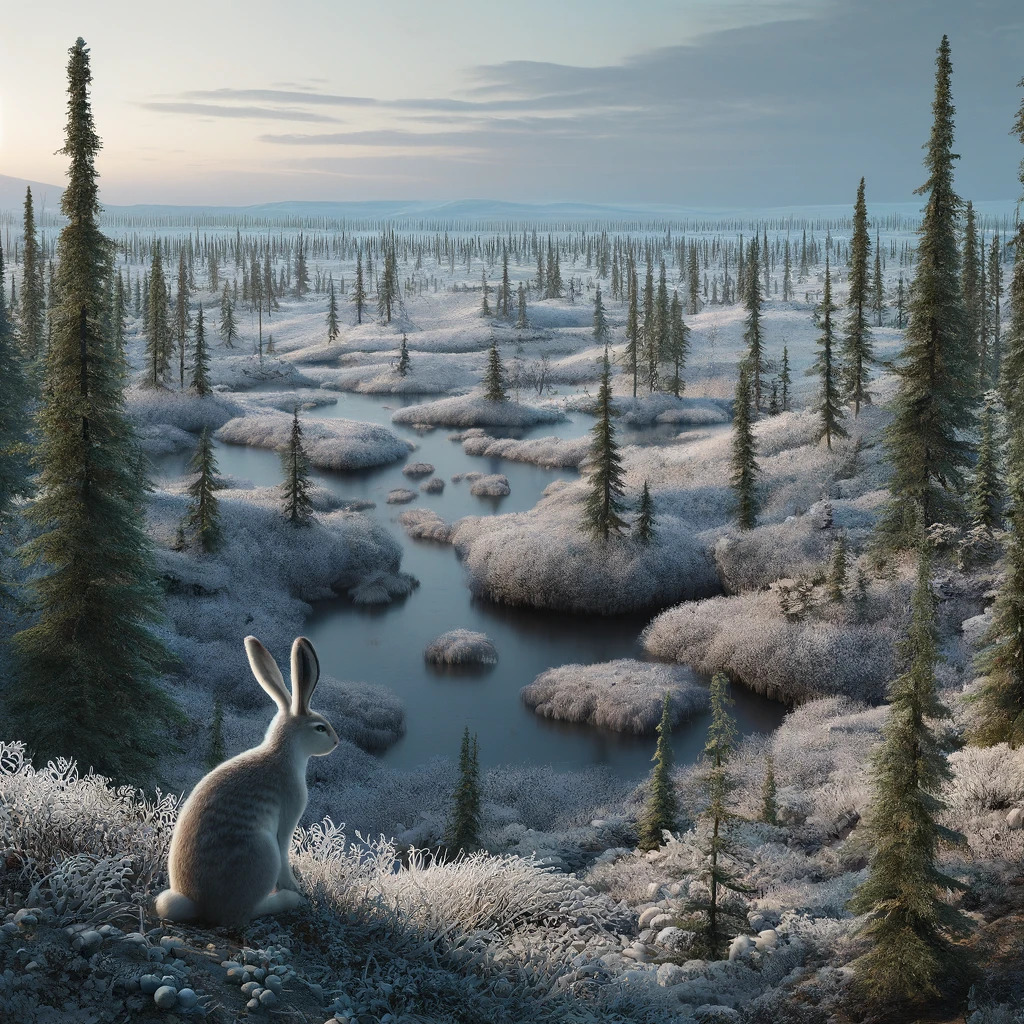
Environment
The environment of the Northern region is an imposing landscape of contrasts, where the towering mountains serve as monolithic sentinels over vast stretches of tundra. These peaks, capped with eternal snow, influence local weather patterns and act as a source of rivers and streams that carve through the frozen ground, providing rare ribbons of life in an otherwise stark setting.
The tundras themselves are a tapestry of hardy flora such as the Frostbloom Shrub and Glacial Needlegrass that, against all odds, root into the permafrost. These resilliant plants have adapted to the relentless cold and wind, spreading across the land in a muted but tenacious display of life.
The spaces between the mountains and tundras are filled with boreal forests, where trees huddle together, creating microclimates that support a greater diversity of life. In these forests, the silence of the snowfall is occasionally broken by the crunch of a predator's step or the call of a lone bird echoing against the cliff faces.
The landscape is occasionally broken up by frozen lakes and ponds, their surfaces locked in ice for the majority of the year, only to briefly thaw during the short summers. These bodies of water are critical habitats for species such as the Icefin Hunter, which has evolved unique biological mechanisms to survive in the frigid waters.
In the most remote areas, glaciers rest atop the terrain. These icey giants harbor intricate caves and crevasses, which form ecosystems that are as dangerous as they are beautiful.
Weather
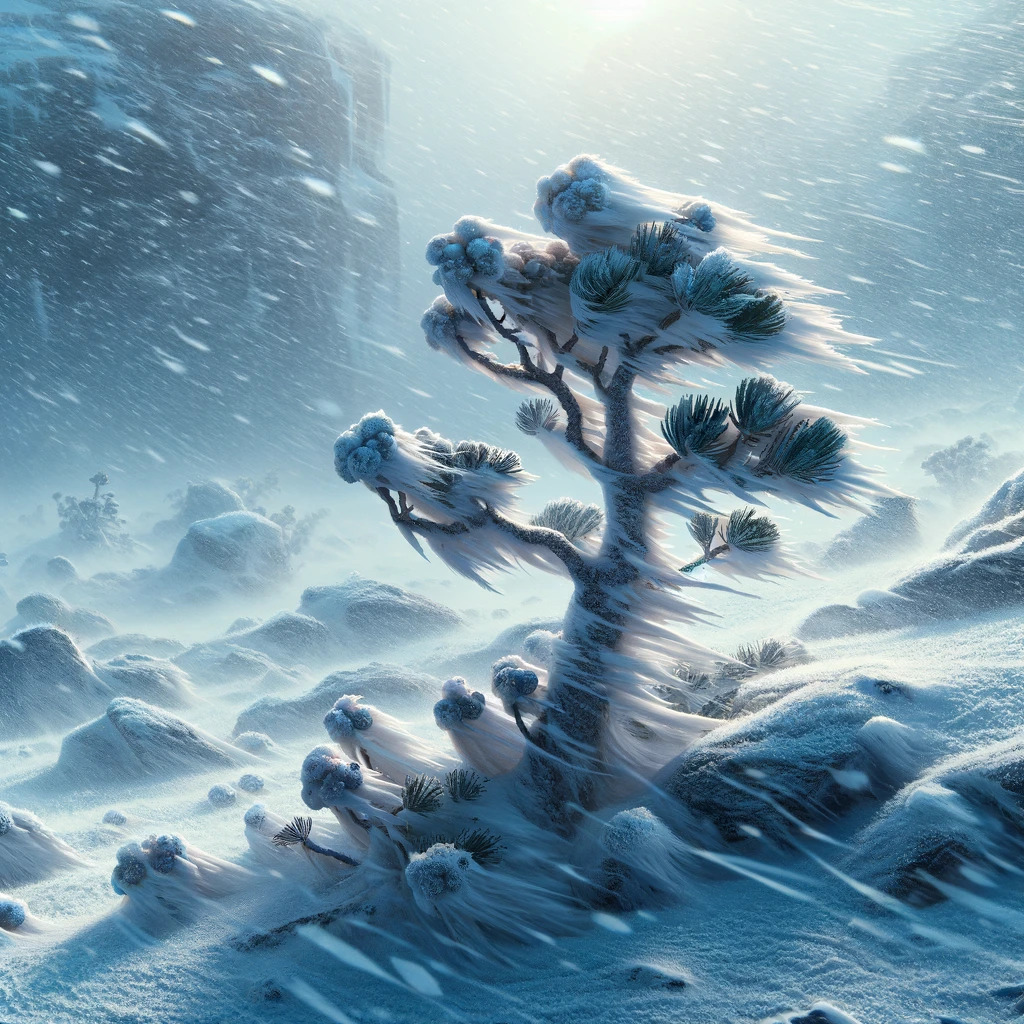
The Northern region experiences severe and unforgiving weather patterns, with blizzards and icy winds being common occurrences that shape the environment and life within it. The extreme conditions bring heavy snowfall and freezing temperatures, which make the region a highly unhospitable place for any unprepared explorers to venture into.
When the blizzards are not raging, the Northern region is often cloaked in a bone-chilling cold, with icy winds that cut like blades across the tundra and through the mountain passes. These gusts carry with them the bite of the polar ice caps, freezing exposed surfaces and creating intricate patterns of frost and ice that cling to every available surface.
During the brief summers, the region experiences a thaw, allowing a short but critical period for life to flourish. The melting snow feeds into the rivers and streams, creating a transient abundance of water that is vital for the local ecosystem. However, even in this season of relative warmth, the temperatures rarely climb high enough to dispel the intrinsic cold of the Northern region.
Nightfall brings a deceptive calm to the region, with the aurora's dance casting ethereal lights across the sky. But even this natural beauty cannot fully mitigate the harshness of the nocturnal freeze that settles over the land, a constant reminder of the region's formidable nature.
Throughout the year, the Northern region is also subject to sporadic thaws and freezes, causing sudden ice storms. These storms can encase the world in a glistening sheath, disrupting migration patterns of animals and the growth cycles of plants.
Culture/Community
The Northern region is mostly devoid of life, with the only significant presence being an unknown black castle resting in the middle of the barren tundra. This castle has stood for years however very little is known about its people, culture, or history.
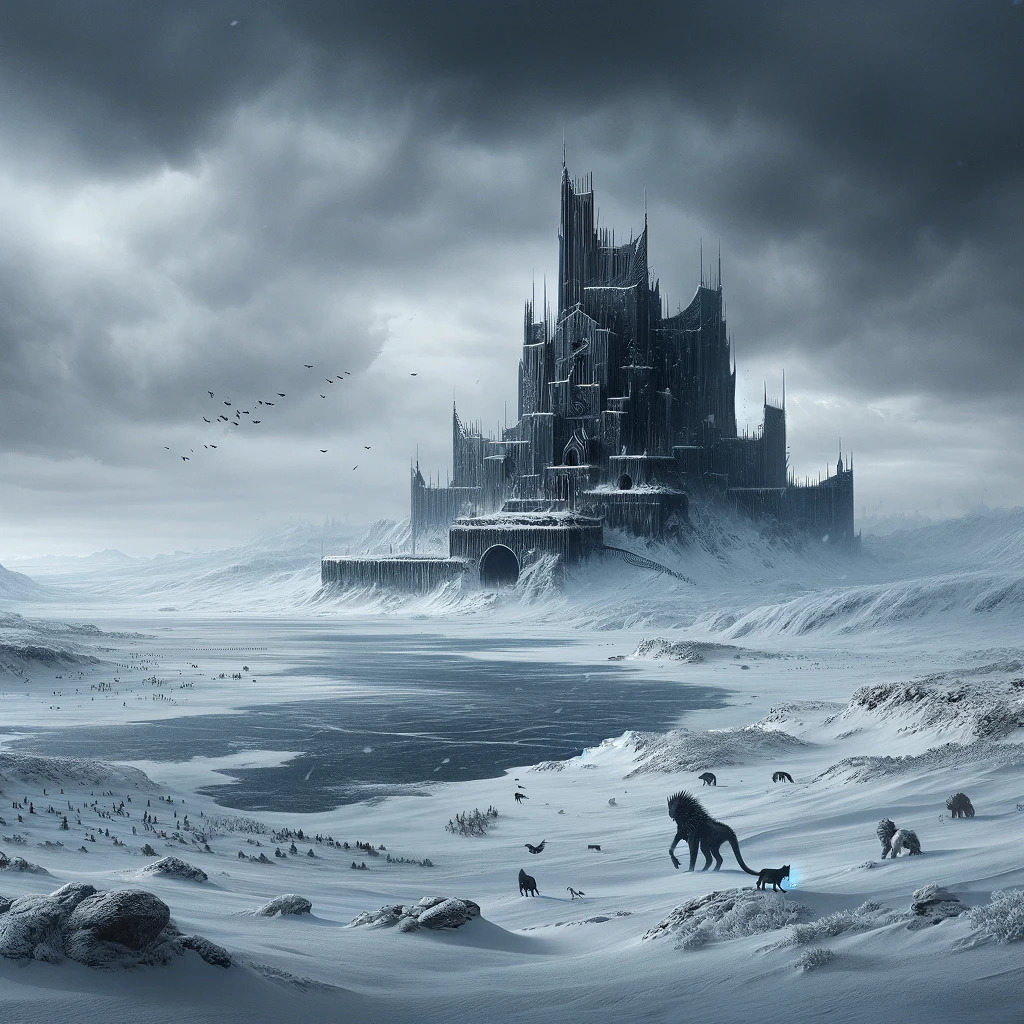
Landmarks
The Northern region is a place of natural beauty and perrilous danger. Only the most well adapted creatures are able to call this region home, making it a region filled with constant conflict over the sparce resources.
Some of the most defining features of this region are the Icebound Peaks and the Frozen lakes/rivers which provide water to areas across the otherwise barren tundra. The frozen lakes are usually becons of life where plants and creatures flourish and congregate, which makes them equally as dangerous. The increased flora and fauna also tends to attract the dominate creatures of the North, making it a hunting ground for the regions apex predators.
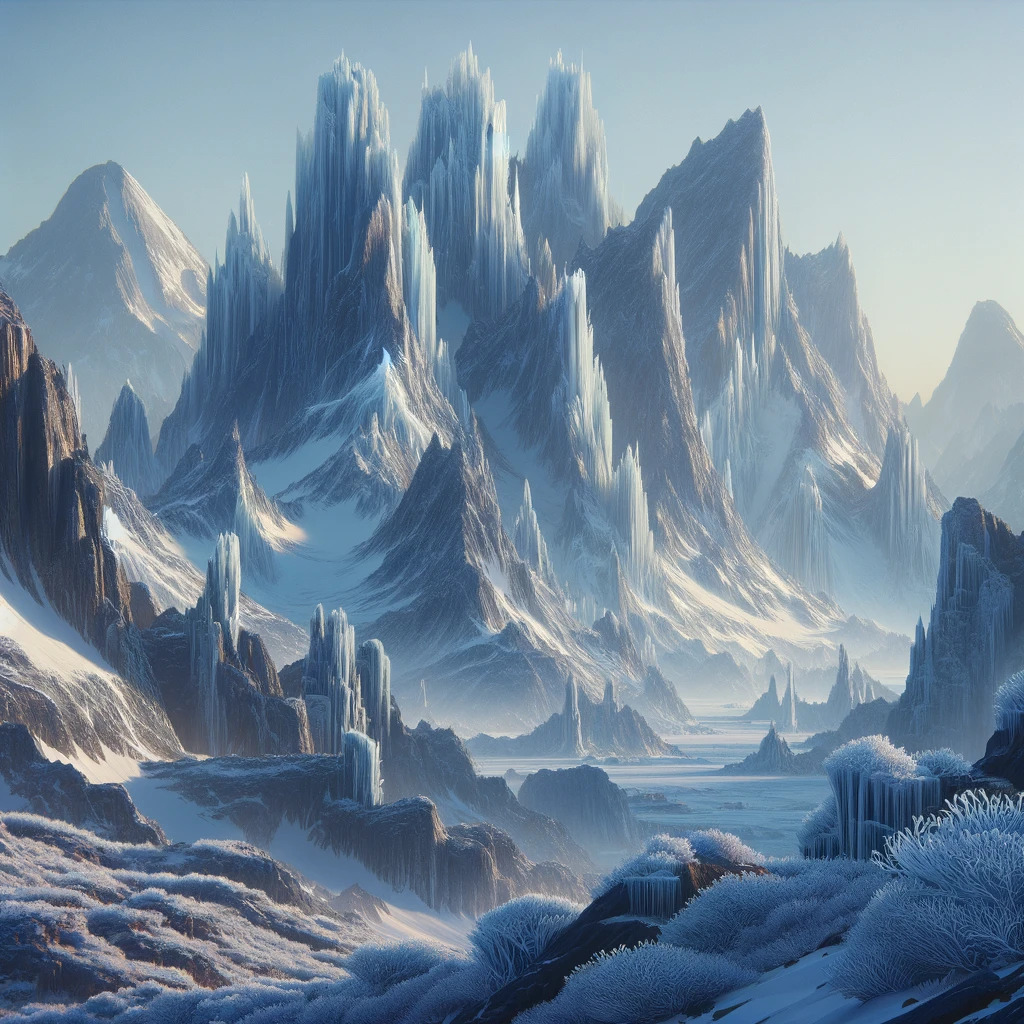

Flora and Fauna
Creatures like the Frostclaw Predator and the Borealis Wisp showcase remarkable adaptations to the cold, while plants like the Frostbloom Shrub and Glacial Needlegrass endure in the sparse vegetation.
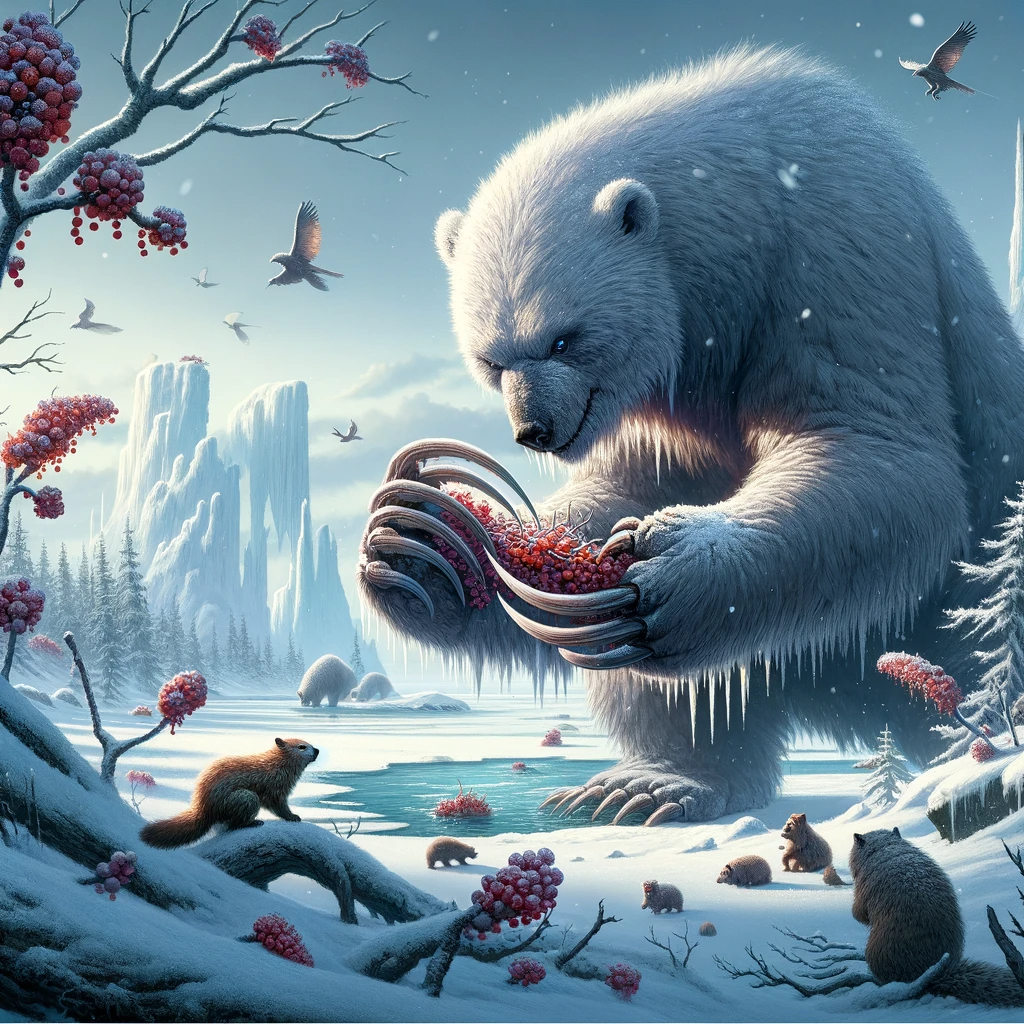
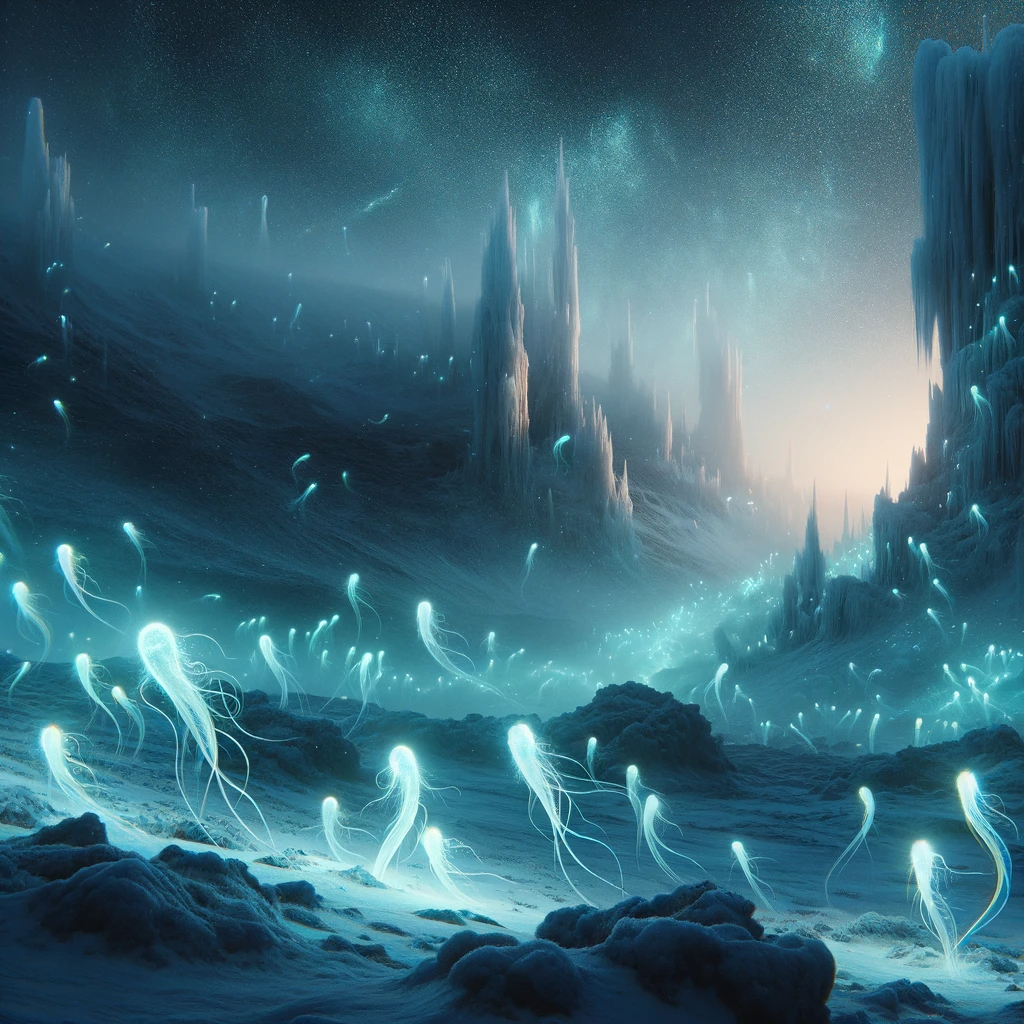
For more detailed information about these creatures, head to the fauna section on the home page. Information about this regions plants can be found in the flora section on the home page.